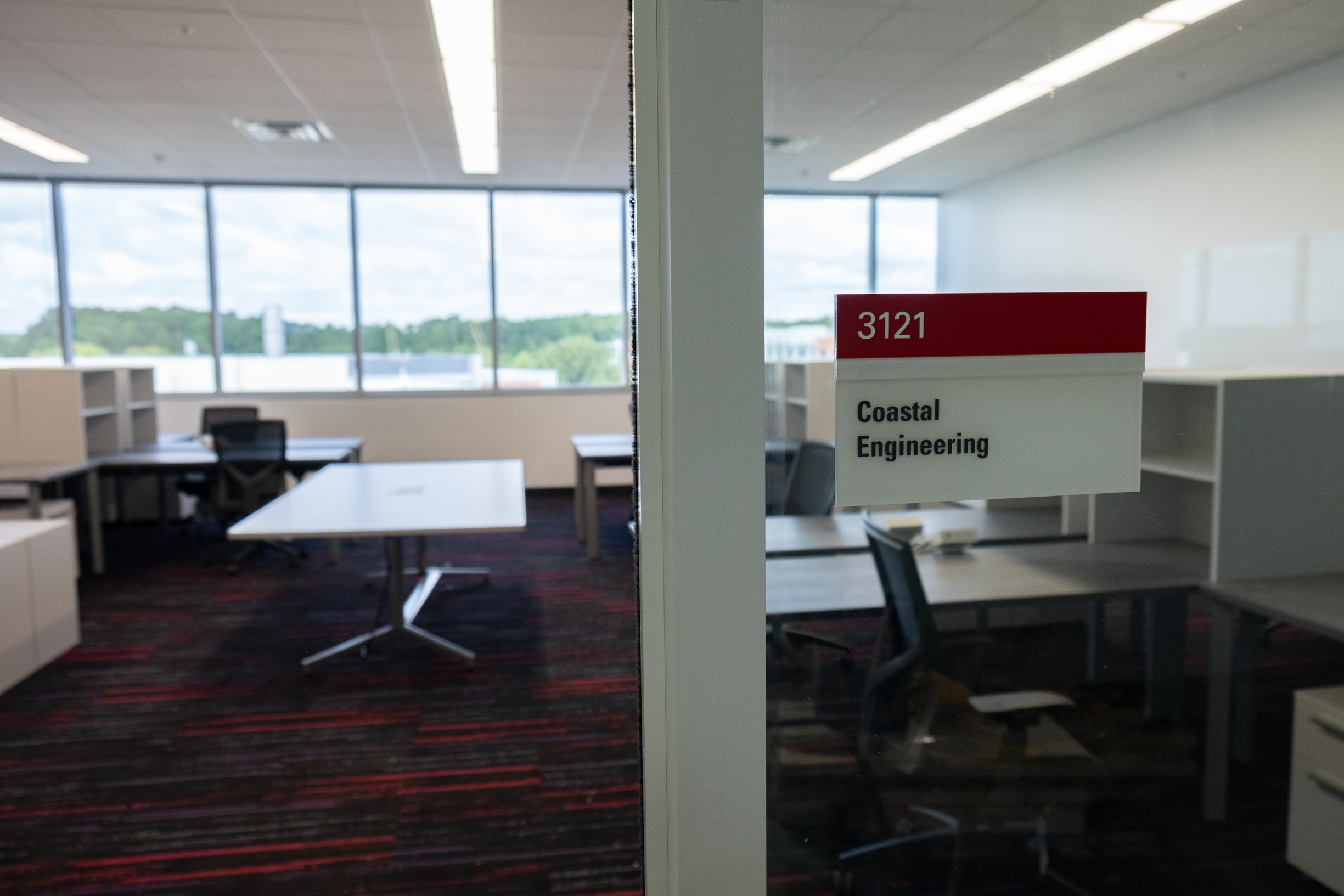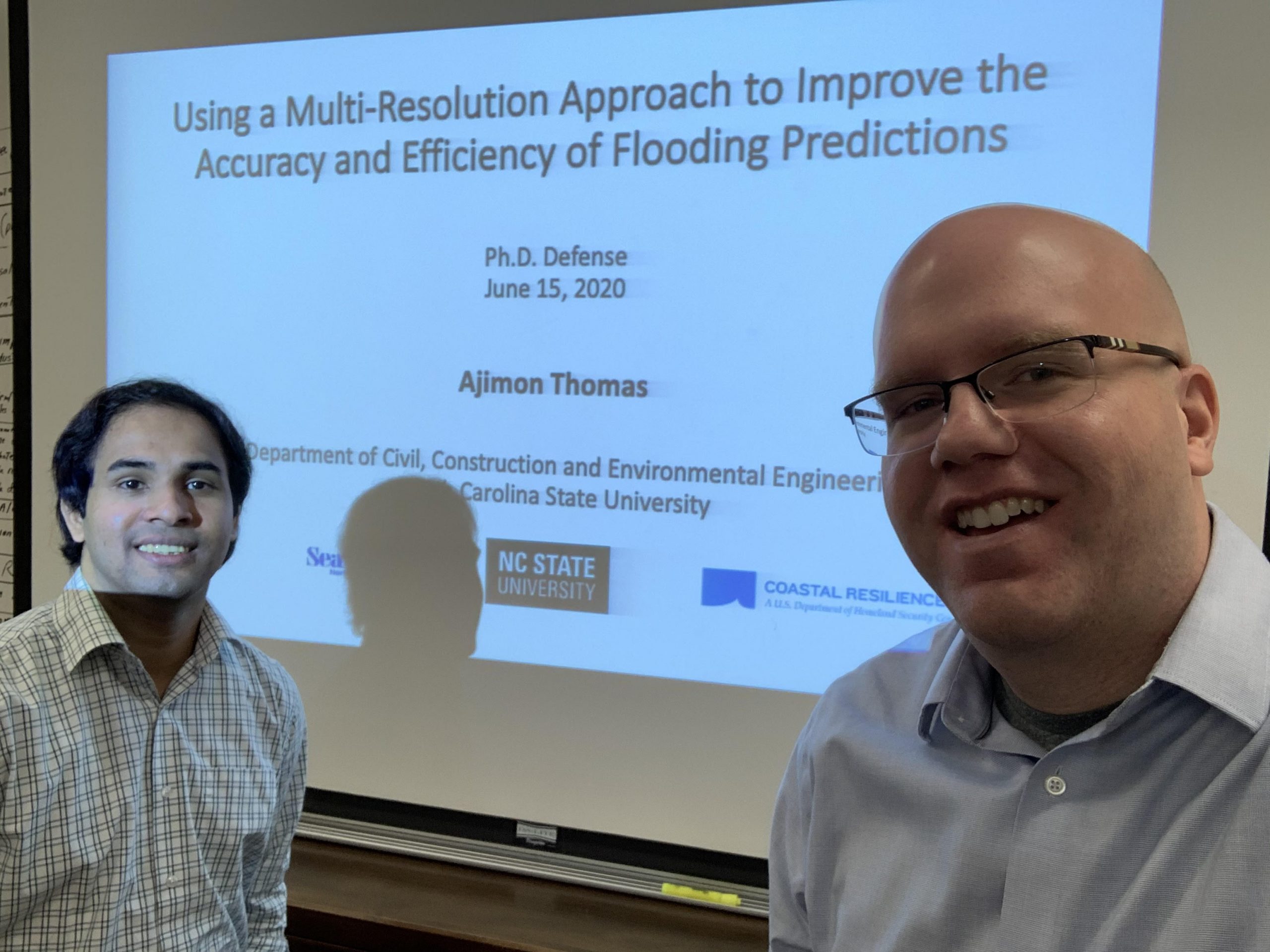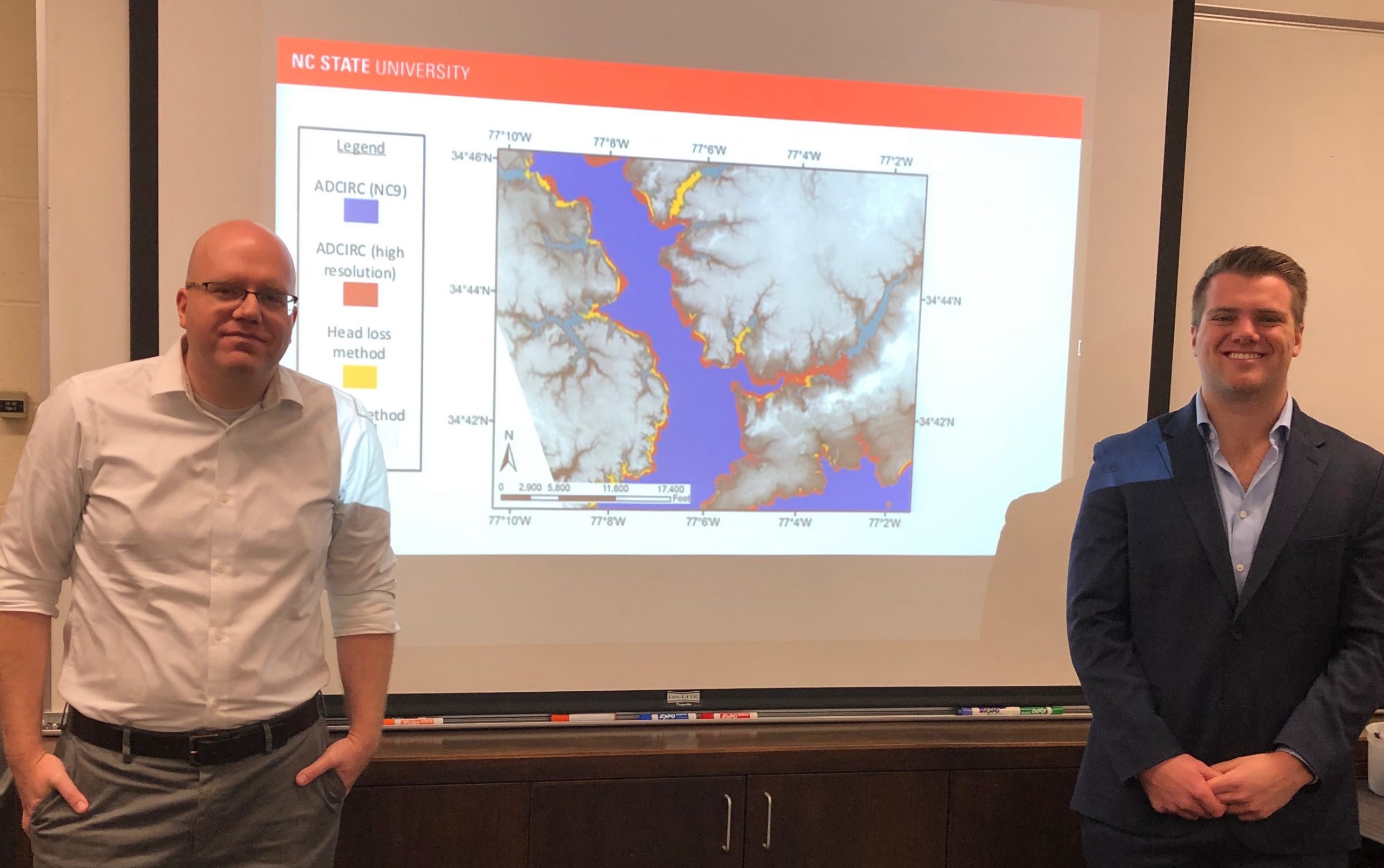
Autumn and her committee were happy with her performance.


Autumn and her committee were happy with her performance.
Congratulations to Johnathan!

CCHT Ph.D. student Johnathan Woodruff.

CCHT Ph.D. student Johnathan Woodruff.

New glass wall and furniture for the lab.


The coastal engineering team at NC State enjoyed a Socially Distant Movie Party on Sat Apr 4. From our separate homes, we watched Sharknado and Cloudy with a Chance of Meatballs, which are mildly “coastal” and good distractions. It was fun to connect with each other, even from a distance. Stay healthy!

North Carolina Sea Grant’s core research projects for 2020 to 2022 will apply innovative approaches to coastal issues. Research teams across the state are starting new studies on coastal resilience, climate change, flooding, shellfish and aquaculture, environmental literacy and more.
“Our core research examines real-world needs of our coastal communities and ecosystems,” says Susan White, executive director of North Carolina Sea Grant. “We are pleased to have so many multidisciplinary collaborations that address our program’s strategic focus areas.”